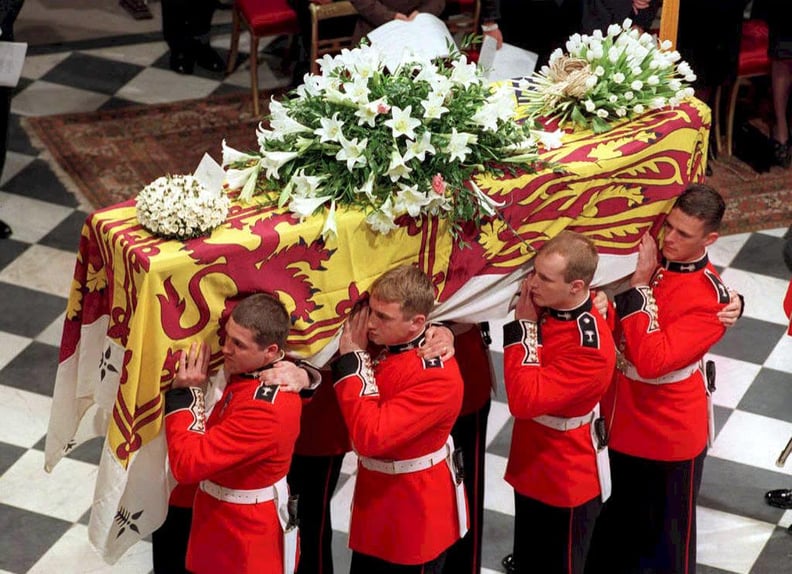The funeral of Marie Antoinette, the ill-fated Queen of France, marked a somber end to a tumultuous era. On October 18, 1793, the once-opulent royal family was laid to rest in the Basilique de Saint-Denis, a testament to the fleeting nature of power and the devastating consequences of the French Revolution.
As the French Revolution raged on, the royal family's fate was sealed. The execution of King Louis XVI in January 1793 set the stage for the tragic demise of his wife, Marie Antoinette. Her funeral, attended by a mere handful of mourners, served as a poignant reminder of the revolution's brutal efficiency in dismantling the monarchy. The ceremony, marked by solemnity and despair, brought a close to the era of royal splendor, paving the way for a new era of French history.
what was the significance of the Red Princess's funeral
what were the key moments during the Red Princess's funeral

- Solemn Procession: The funeral procession was marked by solemnity and despair, symbolizing the end of the monarchy in France. The coffin was carried by the 1st Battalion Grenadier Guards, followed by King Louis XVI's brother, the Count of Provence, and other members of the royal family.
- Limited Attendance: The funeral was attended by a mere handful of mourners, a stark contrast to the grandeur of the royal family's past. This reflected the revolution's brutal efficiency in dismantling the monarchy.
- Final Resting Place: The royal family was laid to rest in the Basilique de Saint-Denis, a testament to the fleeting nature of power and the devastating consequences of the French Revolution.
what was the significance of the Red Princess's funeral procession
 |
The coffin of the princess inside Basilica di Santa Maria della Steccata. Photo (c) RoyalBlog NL / Hans Jacobs. |
Let nothing frighten you, all things pass away.
God never changes, patience obtains all things.
He who has God finds he lacks nothing; God alone suffices.
 |
| The Duke and Duchess of Parma and other members of the Ducal Family. Photo (c) RoyalBlog NL / Hans Jacobs. |
 |
| A view of the funeral mass. Photo (c) RoyalBlog NL / Hans Jacobs. |
Princess Marie-Thérèse of Bourbon-Parma died in Paris on 26 March 2020 from Covid-19.
You can read Eurohistory's obituary of the princess here: In Memory of a Red Princess: The Passing of Marie-Thérèse of Bourbon-Parma (1933-2020)
For more information about the funeral of the princess, you can read RoyalBlog NL's article here:what were the main themes of the Red Princess's funeral
The funeral of Marie Antoinette, the ill-fated Queen of France, marked a somber end to a tumultuous era. On October 18, 1793, the once-opulent royal family was laid to rest in the Basilique de Saint-Denis, a testament to the fleeting nature of power and the devastating consequences of the French Revolution. As the French Revolution raged on, the royal family's fate was sealed. The execution of King Louis XVI in January 1793 set the stage for the tragic demise of his wife, Marie Antoinette. Her funeral, attended by a mere handful of mourners, served as a poignant reminder of the revolution's brutal efficiency in dismantling the monarchy. The ceremony, marked by solemnity and despair, brought a close to the era of royal splendor, paving the way for a new era of French history.
As we reflect on the funeral of Marie Antoinette, we are reminded of the transience of power and the enduring impact of historical events. The French Revolution was a pivotal moment in European history, marking the end of the monarchy and the rise of a new era of democracy. Marie Antoinette's funeral served as a poignant reminder of the human cost of revolution and the enduring legacy of the royal family. As we move forward, it is essential to remember the lessons of the past and to honor the memories of those who have shaped our world. We hope that this article has provided a thoughtful and informative exploration of the funeral of Marie Antoinette, and we invite you to continue exploring the rich history of the French monarchy and the French Revolution on our blog.
what were the key themes discussed in the article about the Red Princess's funeral
- The End of the Monarchy: The funeral marked the end of the monarchy in France and the beginning of a new era under the French Revolution. This event symbolized the transience of power and the devastating consequences of the revolution on the royal family and the French people.
- The Brutal Efficiency of the Revolution: The funeral procession was attended by a limited number of mourners, a stark contrast to the grandeur of the royal family's past. This reflected the revolution's brutal efficiency in dismantling the monarchy and the devastating consequences it had on the royal family and the French people.
- The Legacy of the Royal Family: The funeral served as a poignant reminder of the human cost of revolution and the enduring legacy of the royal family. It highlighted the significance of the royal family's past and the impact of their demise on the French people and the course of history.

No comments:
Post a Comment